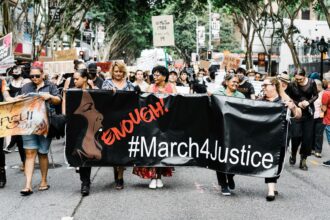Planning A Trip To Vietnam ? Here Are The Visa Policy & Requirements and best places see in Vietnam
Vietnam, a stunning country in Southeast Asia, has recently become a popular travel destination. The country is now much more well-known thanks to the influx of tourists from across the world. According to a Google Destination Insights research, Vietnam ranked eighth among the most popular travel locations between March and June. The only country from Southeast Asia to make the top 20 is Vietnam. Lets have a look at requirements for travelers and visa policy of Vietnam.
Best places to travel in Vietnam:
1. Ho Chi Minh City
2. Hanoi
3. Halong Bay
4. Phu Quoc Island
5. Mekong Delta
6. Cu Chi Tunnels
7. Da Nang
8. Hue
9. Nha Trang
10. Sapa.
Requirements for the Travelers or Visitors
- One must possess a SARS-CoV-2 test result that is negative using the RT-PCR/RT-LAMP technique within 72 hours of admission into Vietnam or possess a negative rapid test result within 24 hours of departure, both of which must be verified by the testing country’s competent authorities.
- If there is no documentation of a negative test result, international travelers coming by land, rail, and sea border gates must take a SARS-CoV-2 test at the border before admission.
- SARS-CoV-2 testing is not necessary for children under the age of two.
- Possess medical or travel insurance with a minimum liability of $10,000 USD that includes COVID-19 therapy.
- Before entering, fill out a health declaration. (found at tokhaiyte.vn)
- Download and run the PC-COVID program.
- Ten days following entrance, keep a health log for yourself.
- If experiencing COVID-19 symptoms and indications, contact the appropriate authorities.
- When traveling in Vietnam, make sure that the circumstances on exit and entry comply with Vietnam’s immigration laws and other pertinent rules.
Vietnam Visa Policy
Vietnam has reinstated its pre-pandemic regulations on entrance visas for foreign nationals.
For nationals of 13 nations (Germany, France, Italy, Spain, UK and Northern Ireland, Russia, Japan, Republic of Korea, Denmark, Sweden, Norway, Finland, and Belarus), Vietnam will waive visa requirements from March 15, 2022, to March 14, 2025, with a 15-day maximum stay.
The majority of international tourists to Vietnam must apply for a visa before traveling there. There are various choices, including regular embassy visas, visa on arrival, and electronic visas. E-visas are available for certain nationalities and may be applied for online before travel. Travelers with letters of pre-approval are eligible for a visa on arrival, which they can get at specific airports upon arrival. Vietnamese embassies or consulates are the places to go for conventional embassy visas. Depending on the visitor’s nationality and purpose of travel, the visa’s criteria, costs, and length change. Before making travel arrangements to Vietnam, it is important to confirm the most recent details and criteria.
Conclusion
Vietnam’s regulations and policies are designed to make travel easier while maintaining security and control. The majority of the time, foreign travelers must get a visa before entering the nation; alternatives include e-visas, visas upon arrival, and embassy visas. The country and purpose of the visitor determine the precise visa type, duration, and costs. Travelers must keep up with the most recent laws and standards because they are often subject to change. The best way to guarantee a simple and trouble-free entry into Vietnam is to consult the official government websites or make early contact with Vietnamese embassies or consulates.
Contributed by Sanal Pillai
Edited by Imtiaz Ullah
Related blogs on Vietnam




